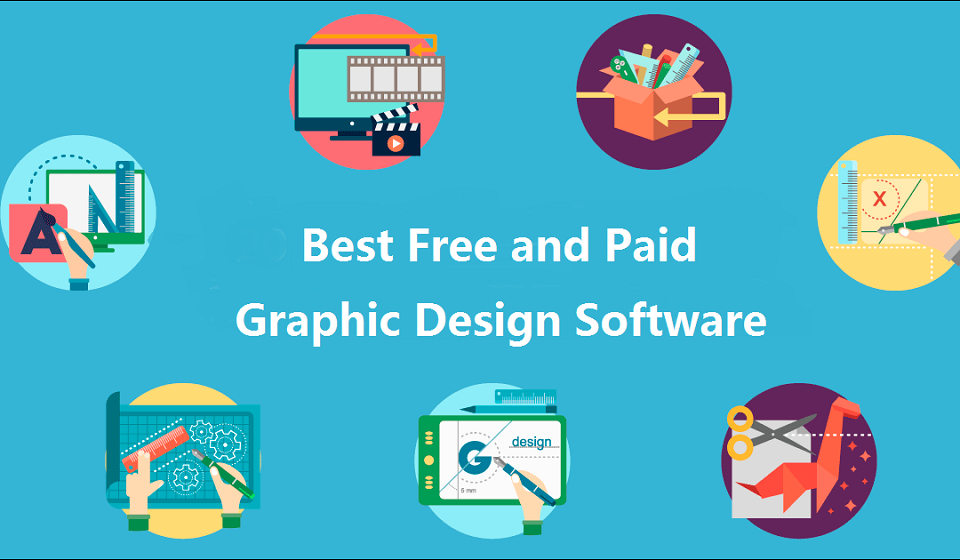
Graphic design software are the tools a designer uses to visualise, realise and finalise the ideas that are swimming around in their heads.
They helps designers to make beautiful, creative and unique designs for logos, brochures, pamphlets, hoardings, visiting cards, books cover, magazines covers, invitation cards, newspapers, product packaging designs, advertising web designs, signage, etc.
Usually you need more than one software for graphic design. For example, Adobe Creative Cloud solution are the most common graphic design software packages used by professionals.
InDesign for your layouts and everything that contains a lot of text, Illustrator for drawing and logos, infographics and a lot more, Photoshop for photo editing or pixel based illustration… you get the idea.
In addition, If you are just getting started and don’t want the commercials, you might want to consider less expensive or open source solutions like – Gimp, Krita, InkScape and Scribus.
Choosing the “best” graphic design software is always difficult because it is a matter of opinion and depends on what you want to create. Every designer must determine which software is best suited to their design style, needs, medium, and, of course, client.
In this article, Whether you want an expansive set of professional graphic design tools or just a free graphics editor, Here are 20 of the most popular options for you to choose from.
What is graphic design?
Graphic design is a skill in which professionals create visual content to convey messages. Designers use typography and images to meet the specific needs of users and focus on the logic of displaying elements in interactive designs to optimize the user experience by employing visual hierarchy and page layout techniques.
What is a graphic design software?
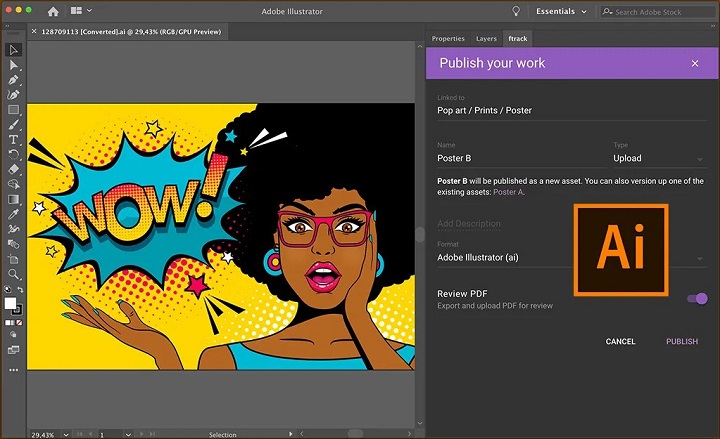
Graphic design software refers to apps and programs that graphic designers use to create, edit, and manipulate digital images.
It includes tools to draw shapes, create effects and filter colors, add text and frames, build objects with layers, etc.
They allow designers edit and resize images, produce original illustrations, combine text, color, and shapes, and bring their vision to life.
Vector VS Bitmap Graphics: What’s the difference?
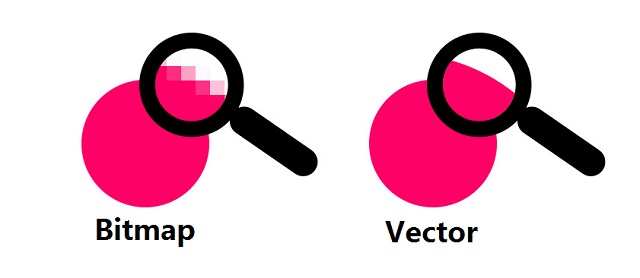
There is software more suited to different types of imagery, for example, vector and bitmap (or raster).
Vector graphics are a combination of mathematical formulas that define shapes, colors, and placement. It is made up of lines, shapes, and points.
They can be edited to the smallest detail and scaled to any size, as often as you need.
Vectors are incredibly versatile. which are the primary choice for printing, logos, signs, illustrations, infographics, and creating animations.
For example, A logo is a vector image. It can be used in almost any circumstance and printed in different locations, from the head of a letter page to a billboard on the side of a building.
Vector images are edited by manipulating the lines and curves that make up the image using a program such as Adobe Illustrator. The 4 most common types of vector file are AI, EPS, PDF, and SVG.
Bitmaps also referred to as raster images, are made with pixels. They are commonly photographs and images. As they are made up of pixels, they risk becoming blurry or unproportionate when resized.
Designers use bitmap images for websites featuring products, restaurants, travel, tourism, and e-commerce because the images are more visually appealing.
Through the use of lifelike imagery, designers can create a sense of desirability and credibility that engages the user.
Bitmap graphics can be edited by erasing or changing the color of individual pixels using a program such as Adobe Photoshop. The 3 most popular image formats used on the Web (PNG, JPEG, and GIF) are bitmap formats.
16 Best Graphic Design Software in 2024
The world of graphic design software has a lot to offer. From easy-to-use programs to more advanced tools, each with their own strengths and weaknesses.
Here are some top contenders that are widely used by graphic designers:
1. Adobe Photoshop CC
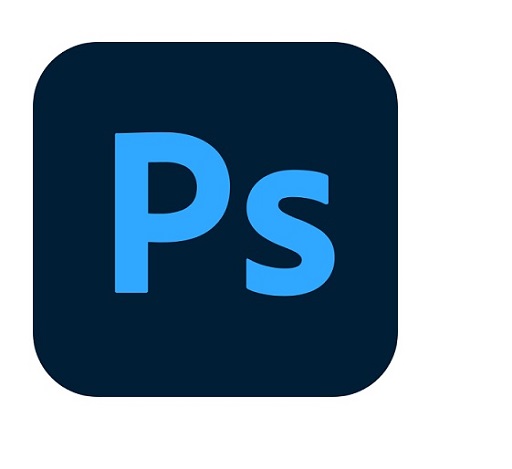
Adobe Photoshop CC is a well-known raster graphics editor, which is used by millions of artists around the world.
It has an intuitive user interface and a comprehensive toolset that includes gradient fills, blending modes, and specialised layers.
It’s used to edit and create images, as well as perform other graphic design tasks such as image composition, image manipulation (resizing, cropping, etc.), color correction, sample touch-up and digital painting.
With Photoshop you can easily combine multiple images and even remove unwanted objects from the image. It offers basic features like perspective correction, channel mixing, and clone stamp tool.
The advanced features include blemish removal, one-touch filter, and image rendering, all of which are easy with Photoshop. Plus, It even adds mind-blowing neural filters, automatic sky replacement, and even better selection tools.
Along with image editing, you can create naturalistic artwork and composition in this software. You can define the size of your canvas, isolate elements from backgrounds, create custom brushes, work in 3D,do much more.
If you are someone who works with illustrative designs, you can even draw or paint anything you like. It offers a wide range of features, including tools for painting, sculpting, and creating textures. Additionally, it has a wide range of plugins that can be used to enhance the functionality of the software.
Photoshop supports many different file formats including: TIFF, PSD, GIF / PNG / JPEG / TGA / BMP / PNG etc., allowing users to save their work in various file types depending on what they are working with at any given moment in time.
With some of the later iterations of photoshop you can create really good vector graphics and import into Illustrator if you wanted to do detailed touch ups.
Photoshop was the original Adobe software, and remains the most popular. Some stuff will be easy for beginners to pick up, but a lot of the more advanced stuff requires commitment to learning the ropes.
Compatibility: Windows, Mac, and iPadOS.
Pricing: Photoshop subscription alone is $20.99 per month, while the Adobe Creative Suite plan is $52.99 per month. Plus, You can get it from Adobe Photography plan (Lightroom and Photoshop).
All of Adobe’s software packages are exclusively available through membership. Of course, this has the benefit that you’ll be able to install and utilise the newest elements as soon as they’re available.
2. Adobe Illustrator CC
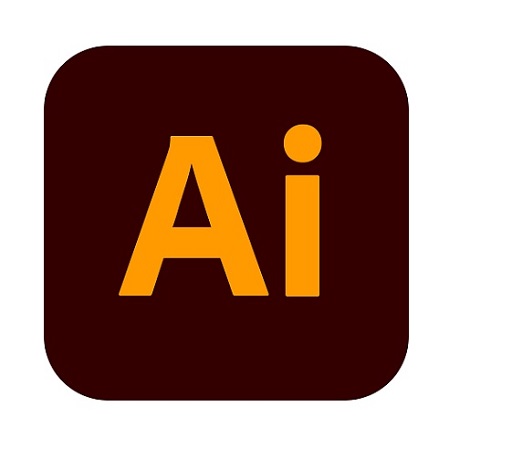
Adobe Illustrator CC is the best vector-graphics editing program around, Its strengths include collaborative editing, improved graphic snapping, cloud storage, and support for 3D assets.
You can share projects due to Illustrator’s integration with Adobe Creative Cloud. Users can create clear lines and sharp sectors as the paths get automatically aligned to the closest pixel grid.
Use Illustrator’s mesh tool, pen tool, swatches, and colors or Shape and Pathfinder tools to create stunning logos, typography, icons, and sketches. It is also widely used for designing print materials like brochures and posters.
To draw, you can use the shaper tool and create vector shapes. Geometric shapes can be added to other outlines and can be moved, reshaped, and scaled.
Adobe Illustrator also has an extensive selection of fonts so you can add text to your artwork easily.
Designers can work more efficiently with the In-Panel Editing tool, which allows them to modify multiple artboards at once.
Additionally, you can recolor artwork with a single click, create unique effects, and much more with Sensei AI-powered features.
Thanks to the vector format, Illustrator supports scaling images up and down much better than raster-based images with no loss of quality. Which is great if you’d like to put a logo created for a business card on a billboard.
Though it will take some time to learn, the nearly limitless potential for creating vector designs is well worth the effort. For beginners, Adobe provides professionally designed templates to save time.
Compatibility: Windows, Mac and iPadOS.
Pricing: Individual app costs $20.99 per month. You can also get it from the Adobe Creative Suite.
3. Adobe Indesign CC
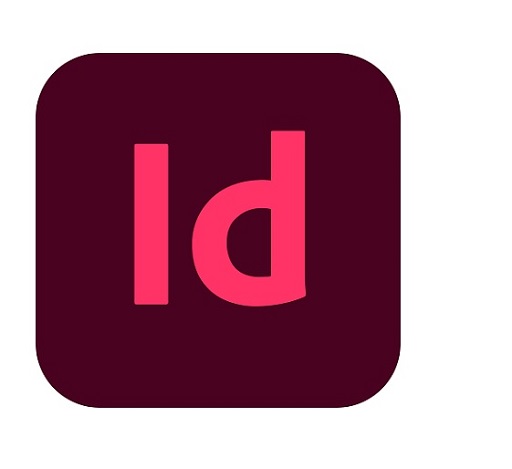
Adobe InDesign CC is an excellent page layout solution with tools precise enough to satisfy even the most demanding professional.
This graphic design software is used primarily in the publishing industry because you can design magazines, info sheets, books, posters, interactive PDFs, brochures, etc. with it.
Whether you want to create print-based documents or interactive digital magazines, InDesign integrates smoothly with the rest of the Creative Cloud application suite to provide a seamless production experience.
The Creative Cloud Libraries can help you share text, colors, and graphics with other members.
The ‘Adjust Layout’ option allows the designer to modify the text of a template without having to worry about any changes in design. This is fantastic for infographics since it allows the designer to change the text and simply adjust it automatically.
The AI-powered Sensei technology integrated into InDesign makes the automatic arrangement and resizing of images.
Designers may use Adobe InCopy to collaborate with other team members by sharing text, colors, and graphics.
Further, managing design elements and generating immersive experiences in any format is a breeze with this tool.
It is an excellent option for web designers to utilize to export clean, simple codes while developing layouts for websites. Because It can assist you in eliminating superfluous div tags and pointless content grouping from HTML documents.
Adobe InDesign has become a household brand for ad agencies and publishing houses all over the world. This is because of InDesign’s subject-aware text wrapping, convenient color location, Adobe Fonts auto-activation, HSB compatibility, and other features.
InDesign basics are relatively easy to learn, although some of the more complex text control features can take some time to master. This makes it simple enough for casual users to work with, yet powerful enough for the most demanding professional users.
Compatibility: Windows and Mac.
Pricing: $20.99 per month for the single app or get it from Adobe Creative Suite plan.
4. Affinity Designer
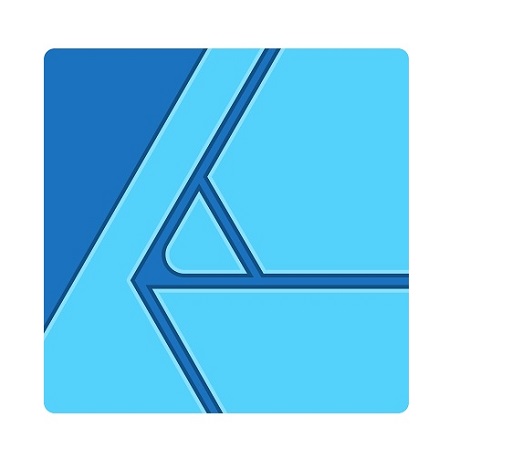
Affinity Designer is part of a three-app package that includes the “Affinity Publisher” (desktop publisher software) and the “Affinity Photo” (bitmap photo editing app) together, they make a professional-quality graphic design suite.
If you are looking for the less expensive version of Adobe Illustrator, Affinity Designer is the perfect alternative.
It offers advanced vector drawing tools such as geometric shapes and Bézier curves that graphic artists, and web designers can use to create vector graphics, UX/UI designs and concept art.
Affinity Designer has animation tools which enable designers to create 2D animations.
The “snap” function in Affinity Designer is similar to Illustrator’s and allows you to lock items in place.
The Grid Systems feature allows designers to set up grids when designing isometric game graphics and icons.
You can use rope and window stabilizers with Affinity Designer to generate smooth and accurate curves, resulting in attractive vector graphics.
Additionally, Affinity Designer incorporates a lot of functionalities to play around with, like easy color swatching.
Affinity Designer is compatible with various file formats, including SVG, EPS, PDF, AI (illustrator), PSD (photoshop) and more, which promotes convenience.
It’s slightly simpler than Illustrator, less cluttered, way more affordable, easy to get-to-grips with. Anyone on a budget, but still wants to create high-level, highly professional work should definitely give this one a go.
Compatibility: Windows, Mac and iPadOS.
Pricing: Purchase either the Windows or macOS version for a one-off payment of $69.99 or get the entire suite (with Affinity Photo and Publisher) on all Compatibility for only $169.99 with the Universal License.
You can also buy the iPad version on its own for $19.99. No monthly costs whatever you decide.
5. CorelDraw
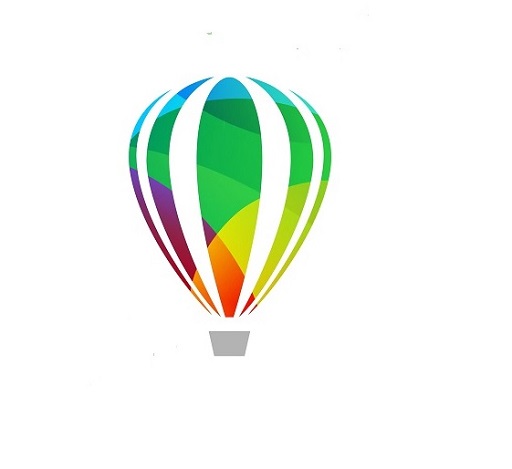
CorelDraw is one of the most powerful vector-based software available today, and it can be used for creating any type of graphics you could imagine.
It is commonly used by professionals for tasks such as logo design, packaging design, and layout design.
CorelDraw has a customizable desktop UI environment, including icon scaling, toolboxes, and a window border color scheme.
Some of its features are – color balancing, contrast adjustment, Special effects, and it’s capability of working with multiple layers and pages.
The impressive LiveSketch feature is powered by artificial intelligence, which allows you to transform the creativity of free-form sketching into precise vector curves.
CorelDraw has web graphic tools and presets to develop creative web content. The file compatibility is also overwhelming, with over 100 file formats supported.
It has an online library that gives you access to thousands and thousands of digital images, templates, fonts, templates, frames and more.
CorelDraw owes its popularity to its in-built productive functions, ease of use and tutorial tips and videos.
This best graphic design software is always up-to-date and includes powerful tools that help designers work faster and smarter.
Compatibility: Windows and MacOS.
Pricing: The CorelDraw Graphics Suite is a full package bundle for vector illustration, photo editing, layout & more. It has 3 pricing editions, from $249 to $499.
6. Figma
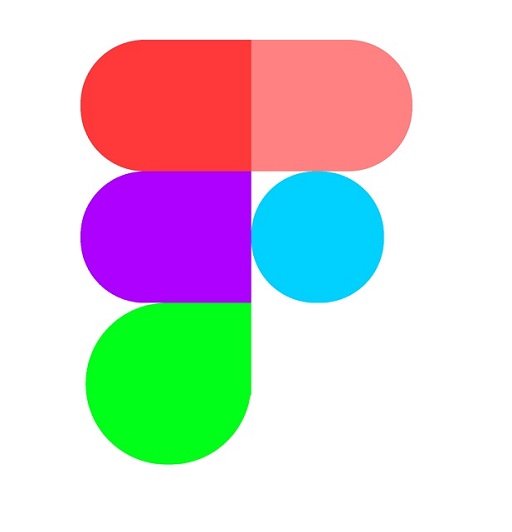
Figma is a web-based design application that allows designers to collaborate on designs in real-time. It is popular for its ability to create responsive web designs and its collaboration features.
You can enjoy designing with this software because it is rapid and really effective. It includes everything you need for free to make incredible logos, social media graphics, presentations, and more.
Figma provides designers with all the tools they need for the design phase of their projects, including vector tools for illustration, prototyping capabilities, and code generation.
Figma offers a preview feature that allows you to simulate the user experience and look for errors or UX enhancements.
It also has different functions than the main Figma “Design files” (sketches, post its, notes, highlighters).
Figma has premade templates and a big community you can source from. you could create dozens of formats and sizes on one canvas, With Canva you are limited to one size for each file.
A lot of plugins make it much, much easier to create different materials, charts, textures and layouts.
With the Figma font plugin (or just the desktop version/app) you can use all local fonts you have installed on the pc its run on. So you don’t have to buy fonts and can play around with fonts and font styles.
You want to engage with your team, Figma incorporates FigJam, a great whiteboard tool where you can share ideas, materials, examples and curriculum, that everyone can access it at the same time and work on the canvas together.
The real showstopping part of Figma that makes it stand out from other graphic design software is how easy it is to create prototypes. This is essential if you ever design an app or web design layout.
Compatibility: Web-based for all platforms.
Pricing: Figma has 3 pricing edition(s), from $144, $540 to $900 annually subscription.
While there are paid versions of Figma, the free version is perfect for most designers and can hold up to three projects at once. which provides nearly full access to the features and assets you’ll find in Figma Pro.
7. Adobe XD
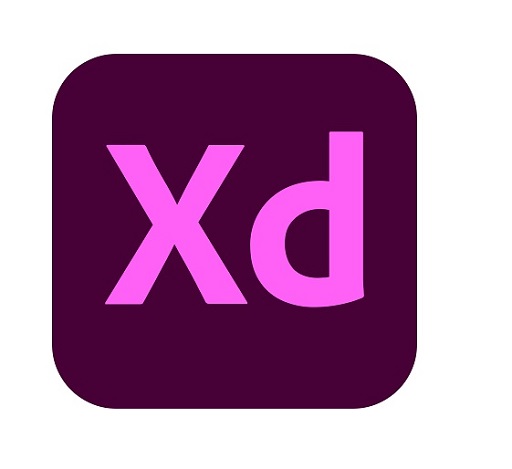
Adobe XD is a vector-based design tool specifically for UX design. It comes with UX-specific features that were not available to designers using Photoshop or Illustrator.
XD combines lightweight layout and drawing tools with simple button linking to different artboards to simulate navigating through an app or site.
Tools like 3D transformation, component templates, and content-aware layouts can save designers tons of time while producing polished and beautiful-looking work.
Repeat grids are awesome. They allow you to make copies of an element and automatically arrange them in a grid. Using controls you can easily change the vertical and horizontal spacing.
All paths and shapes are vector based, and XD can easily import vector based files from Illustrator and they can copied between.
The vector elements in Adobe XD can then be exported as SVG or PDF for use in development, marketing materials etc.
Adobe’s Coediting tool lets you save a project to the cloud and invite other editors to design together in real time or share with clients..
Adobe XD offers both native and third-party plugins. While Adobe has offered plugin integration for longer than Figma, its library of options is significantly smaller.
Finally, XD have document assets, which allow you to save colors and character styles in a single repository, and then apply them to other elements.
Compatibility: web-based for all platforms, app version for iPadOS and Android.
Pricing: Adobe XD offers subscription pricing at $9.99 per month, or as part of a Creative Cloud app bundle.
8. Sketch

Sketch is a popular vector-based graphic design application for Mac users which help in creating UI/UX-based designs.
Sketch offers tools similar to Adobe XD or Figma, with a significant focus on collaboration.For concept designs, icons, and web elements, Sketch is tough to beat.
Sketch offers full support for Retina and non-Retina displays, dark and light UI, Touch Bar support, built-in spellcheck, and native fonts and emojis.
it includes an iOS artboard collection as well as responsive web design templates. Additionally, Sketch has hundreds of custom plugins available for designers to employ on a project-by-project basis.
With Sketch, you can collaborate with other designers on the site to make a prototype. According to the content, the item will seamlessly resize thanks to the program’s intelligent layout capability.
The best thing about Sketch is the prototype feature. With this feature, users can mock up website designs, apps, and more. This is the perfect way for you to show your clients exactly what you envision happening once your designs are installed and come to life.
Sketch is known for its ease of use and its focus on user experience design. Its cost-effectiveness, screen templates, and great mobile/web experience get this software a place on the list.
It’s also accessible enough for newbies to learn and has a lower learning curve than most product design solutions. Moreover, there are numerous tutorials to learn it from.
Compatibility: MacOS.
Pricing: Yearly subscription of $99 or $9 per month with a 30-day free trial. There is no free version.
9. Gimp
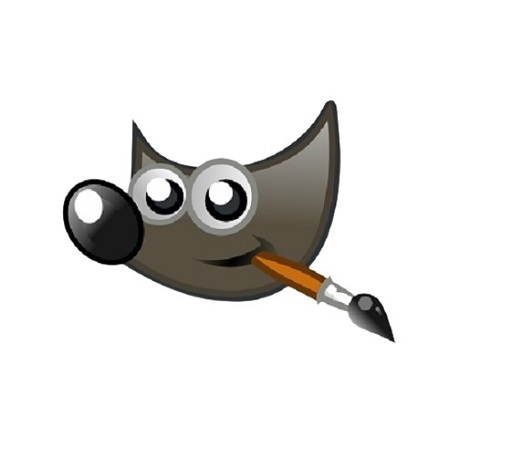
If you’re interested in photoshop, a free alternative is GIMP. It is a great program for such tasks as photo retouching, image composition, and image authoring.
The UI isn’t quite as sleek and appealing as some of the others on this list, but all of the advanced features, like retouching, cropping, drawing, etc. are all there.
GIMP comprises a myriad of attributes which allow users to design artwork and icons, edit images and develop designs using layers, masks, textures and more.
This sophisticated graphic design program offers a variety of specialised features, including noise reduction, visual editing tools, and customizable brushes.
One of the best features of this tool is that it allows users to create high-definition graphics It has a full-screen mode that enables users to view and edit their design at the same time.
Gimp contributes to top-notch color management features to ensure high fidelity color management.
However, In GIMP, you are only capable of editing in RGB, lacks support for CMYK mode, which can be limiting if you’re designing for print.
While GIMP has a huge library of available plugins, it doesn’t support Photoshop plugins, which could be a setback to many users.
Besides being free, GIMP gets regular updates as it’s an active community of developers. Separately, the support for GIMP is outstanding. The documentation, knowledge base, and community are beneficial.
Despite its reliability, GIMP requires a difficult learning curve. As it often happens with open-source software.
Compatibility: Windows, MacOS, and Linux.
Pricing: Free
10. Corel Vector

Corel Vector (formerly Gravit Designer Pro) is a web-based vector graphics editor that is known for its simplicity and ease of use.
Corel Vector comes with a range of features such as vector editing tools, a color palette system, a layers control panel, and more.
Powerful vector manipulation gives you complete control over every design aspect. great for creating beautiful illustrations, typography, geometric shapes, and much more.
Corel Vector offers unlimited cloud storage space, PDF export up to 300 dpi (good for offset printing), CMYK, RGB, HSB colour space editing), you can work offline and have a few more export and project history options.
The software also offers an intuitive user interface with drag-and-drop capabilities that make it easy to get started quickly.
The software supports JPEG, PDF, SKETCH, EPS, and SVG file formats, making it ideal for creating graphics that can run on different platforms.
Plus, the software has a huge library of vector assets, including emojis, illustrations, and forms.
With Corel Vector you can create logos, illustrations, web graphics, infographics and much more.
Compatibility: web-based for all platforms.
Pricing: 15-day free trial, $70-$100 yearly subscription
11. SVG-edit
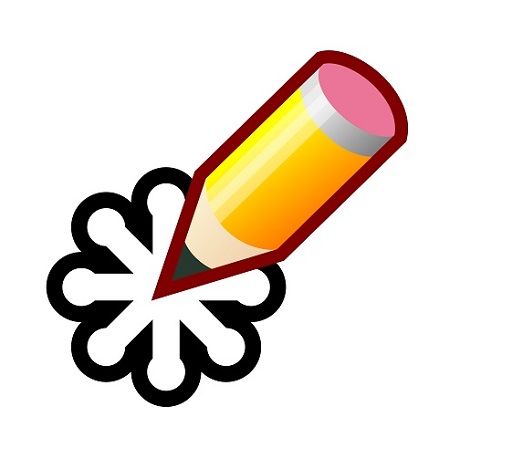
SVG-edit is a fast, open source, web-based SVG drawing editor that works in any modern browser.
The software can modify or output SVG files and support conversion to other file formats such as PNG, BMP, WMP, and JPG.
The solution offers simple navigation – you just drag and drop an image on your browser, and you’re good to go.
Among its core features are freestyle drawing, wireframe modes, lines, polylines, converting shapes to path, raster images, stylized text, layers, color and gradient selection.
Freehand Drawing is easy and convenient, you can change the color of the fill and stroke, as well as the opacity and thickness of the stroke.
When it comes to typography, the tools available will seem fairly simple if you’re used to using a cooler editor.
The choice of font is limited to categories: Serif, Sans-Serif, Cursive, Fantasy and Monospace, and styles – Bold and Italic. You can set any size you like.
It doesn’t have a big range of advanced tools, but for simple vectors, or even slightly more detailed ones, it’ll do the job just fine.
Compatibility: Web based for all platforms.
Pricing: Free
12. Inkscape
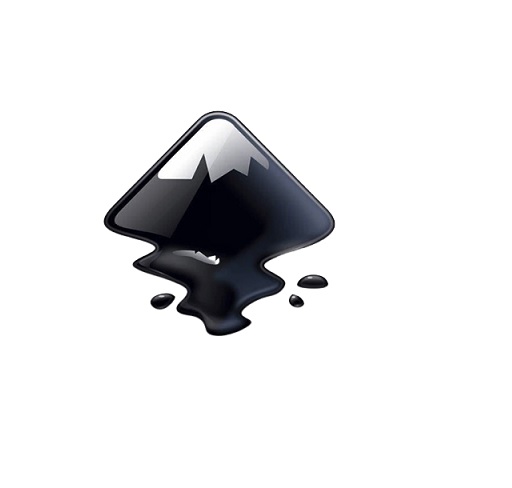
Inkscape offers a completely free way to create vector images, and competes with Adobe Illustrator in terms of available features and tools.
While this software lacks Illustrator’s processing power and polished look, it’s still exceptionally full-featured.
With a wide variety of vector editing and designing tools, this application proves handy for graphic designers.
Inkscape provides significant text editing, Bezier and Spiro curve types, and broad file compatibility.
Additionally, it includes an extension-based approach that makes it simple to add new features, and there are several incredible ones available.
The many effects and advanced, industry-grade options available in Inkscape are numerous. such as alpha blending, cloned objects and markers. It comes with multiple gradients and helps you create complex combinations too.
You can use it to create a business card, logos, online graphics, website, user interface, poster, paper scrapbooking, flyer, or just to practice your skills.
Inkscape supports the SVG format and can import and output pictures in PostScript, EPS, JPG, BMP, PNG, and TIP formats.
Inkscape has an extensive community of developers and professional users happy to answer questions and help beginners.
Once you get past the steep learning curve and outdated interface, you’ll have some of the best open-source design software at your fingertips.
Compatibility: Windows, Mac, and Linux.
Pricing: Free
13. Scribus
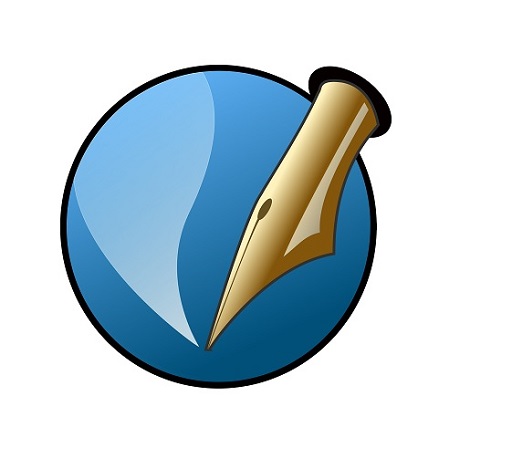
Scribus is a free and open-source desktop publishing program that has been made available to most desktop operating systems and multiple languages. For someone who prefers not to pay for software, Scribus is a perfect solution.
The app uses a similar system of frames and layers to InDesign and Affinity Publisher. It has features that include vector drawing tools, emulation of color blindness, and import and export for many file types.
You can get professional features such as OpenType, CMYK color support and commercial-quality PDF production, but you don’t get much in the way of fonts and Pantone colors aren’t supported.
Another downside is that you can’t import files from other apps like InDesign or QuarkXPress. For zero cost, that’s a compromise most people will be willing to make.
The drawing tools are surprisingly versatile, and there are some decent templates too. with this, Scribus makes creating brochures, business cards, and other publications a breeze.
The publishing procedures with Scribus can be resolved by shifting and dragging the elements inside the page, as you like. Created documents can be saved in the most popular text and image formats.
It supports many different graphic formats, the SVG format, and ICC management of the colors and scripts in Python language (that is, macro programmability). but the file format of this software is XML-based.
With it, you can design leaflets, books, posters and magazines. Besides, you can create interactive forms and PDFs to post to social media.
the powerful Scribus toolset does take time to master. That’s the trade-off for choosing the top free DTP tool packed to the rafters with professional-grade features.
Scribus also has an enthusiastic community around it, so it’s easy to find advice and tutorials if you get stuck on how to do something.
Compatibility: Windows, Mac and Linux
Pricing: free
14. Canva
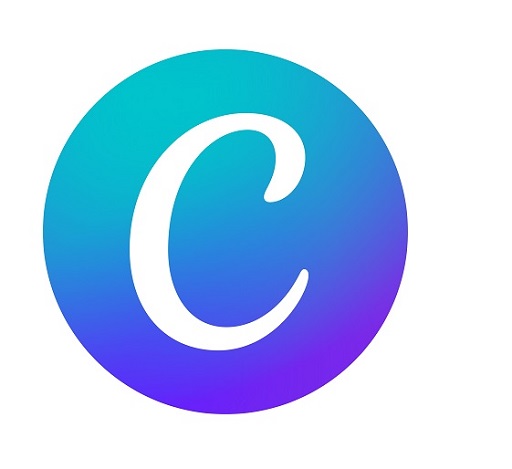
Canva is an easy alternative for those without the time – or the money – to get to grips with Adobe Illustrator and InDesign.
Canva is a web and mobile based design tool that you can use without any prior knowledge at all. It’s impressive because of its straightforward navigation, user-friendly, and clean design.
Canva has an intuitive drag-and-drop editor, coupled with access to a huge variety of graphics, fonts and images, thus helping users to create a variety of designs for any type of content.
The built-in photo editor is ideal for quickly cropping and resizing photographs, as well as adding filters, frames, text, and effects.
You even can use Canva to add animation effects to your designs. Simply choose Animate from the drop-down menu. All of the available effects are displayed here.
It is often used by beginners as it includes a large variety of templates for developing brochures, invitations, marketing materials, infographics, flyers, presentations and more.
Furthermore, since it is an online platform, collaboration with other users is easily achievable (for up to 10 people with the free version of the software).
Canva offers you the simplest way to share and export your files with an easily-accessible share button and it is compatible with almost all devices.
If you’re not looking to produce books or magazines, but instead want to quickly put together brochures, images and adverts for Facebook and other social media, your CV or a letter, Canva is the program for you.
Compatibility: Web Based for all devices; App version for iPadOS and Android.
Pricing: Canva is free to use and offers paid subscriptions like Canva Pro and Canva for Enterprise for additional functionality.
The free version has a slightly reduced set of features, but there are no limitation to how many designs you can create with the free edition.
Unlike many free design tools, Canva doesn’t impose a watermark on designs made via the free version, which is a huge pro.
15. Vectr

Vectr is a free vector graphics editor that is designed for creating and editing vector images. It is available for both stand-alone desktop and web-based use.
The software is ideal for creating resumes, typographic logos, icons, illustrations, business cards, memes, social media headers, and other vector-based designs.
Vectr has a simple user interface that makes it easy to use. It also has a wide range of tools and features that allow users to create complex designs.
Vectr delivers basic tools like pencil, pen, shapes, and text, and the ability to add styles and effects to layers and assets. It also gives real professional quality features including filters, shadows and fonts.
Vectr is designed to be a collaborative tool, it has the ability to share URLs in real-time. This means you can work in teams to create your desired graphics.
You can also easily share your creations with this URL that you can send by e-mail or share on social media without the need for attachments.
There’s also a chat feature, so collaborators can chime in while you are designing, and you don’t have to deal with tons of notes after-the-fact.
For high-end designers, Vectr likely doesn’t have all of the features you’ll want. But casuals and amateurs alike will find the low learning curve attractive.
Compatibility: Web Based for all devices.
Pricing: free, no paid version
16. Xara Designer Pro X
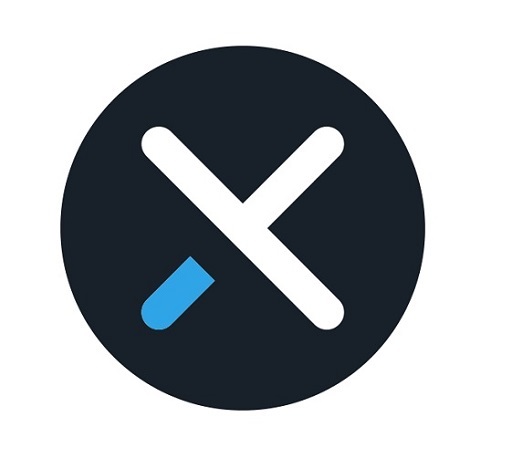
Xara Designer Pro X is advanced graphic design software that combines vector drawing, raster photo editing, and page layout in a single application.
With simple drag-and drop functionalities, hundreds of template layouts, design elements, and over a million archive photos, designers can create custom work easily and quickly.
The software boasts of speed and performance in renderings, creation, and adjustments. It has an array of tools for drawing, 3D extrude, text handling, blends, page layout, live effects, transparency and feathering, and shadows and contours.
Aside from design tools, it has professional photo handling capabilities, web graphics and website creation and management features, and industry-standard compatibility – import and export various file formats, including Photoshop PSD files.
Xara Designer Pro X is the perfect choice for professional design work, ideal for print and the web. from simple button or logo designs to incredibly detailed illustrations, posters, multi-page brochures and photo layouts.
The software comes with free tutorials to teach the program’s ins and outs. You can always learn new techniques or tweak existing ones with the help of Xara Designer.
If you’re an all-around designer who requires a little bit of everything, Xara Designer can do the tricks for you. However, it lacks some of the professional features required to produce higher-quality work.
Compatibility: Windows only.
Pricing: Xara Designer Pro X Individual license is offered at $299. Xara also has two other products that are subsets of this program.
How to choose the best graphic design software?

Before committing to graphic design software for you or your business, you should decide what tools and features you need.
Here are some key factors to consider when choosing a graphic design software:
Compatibility
Make sure the graphic design software is available for your preferred operating system: Windows, Mac, Linux, Chrome OS, IpadOS, or Android.
Features
Consider the specific features you need for your projects, such as photo editing, vector graphics, animation, or web design tools.
Learning curve
Some programs are more beginner-friendly than others. Choose one that suits your experience level.
Depending on your skills, you may want a program that: Is easy to use; Has a clean look; Has easily accessible tools; Can be customized.
Community and resources
Look for programs with a strong online community and plenty of tutorials and resources to help you get started.
Templates: Creating something from scratch can be time-consuming and frustrating, especially if you are not a particularly creative person. Having access to a bank of templates gives you a good place to start.
When assessing templates, consider what you will be creating more as different content has different sizes.
Photo Gallery: Buying props and taking professional photos can get expensive. Look for graphic design software that also comes with stock photos and images.
Image banks take the stress out of gathering all the resources for a photoshoot and taking the perfect image. They also save much time and much money.
Collaboration Tools
Some programs like Figma has real time collaboration tools, which make graphic design more streamlined.
Having all the content saved in one Cloud, accessible by everyone, enables quick and easy sharing and cohesive designs.
Conclusion
These 16 graphic design programs allow designers to create complex visuals and designs. the best one will depend on your budget and specific needs.
If you are just starting out, you may want to try a free or low-cost program to see if you enjoy graphic design.
If you are serious about pursuing a career in graphic design, you will likely want to invest in Adobe Creative Cloud or another professional software suite.
It’s a good idea to try out a few different applications and take advantage of the free trials to see which one will fit your needs and help you create stunning visuals.
With so many options available, now is the perfect time to explore the world of graphic design software and find the right solution for you.
FAQs
What software do professionals use for graphic design?
The most popular graphic design software used by professionals is Adobe Creative Cloud.
This suite of software includes a variety of programs for different tasks, such as:
Adobe Photoshop: For photo editing and image manipulation.
Adobe Illustrator: For creating vector graphics and illustrations.
Adobe InDesign: For creating print and digital publications.
After Effects: For creating motion graphics and animation.
What is the best free graphic design software for beginners?
There are several free software options available for graphic design. A few of the best ones are GIMP, Krita, Inkscape, Canva, Scribus, SVG-Edit, Vectr, etc.
They are not as great as adobe creative suite but still decent for graphic design work. Choose the one that best fits your needs and start creating beautiful graphics today!
Do I need a pen tablet for graphic design?
A graphic tablet is not strictly necessary for graphic design, but it can greatly enhance the creative process.
Graphic Designers like to use drawing tablet with pen for digital painting, illustration and photo retouching work.
The pressure sensitivity and natural drawing motion can make this kind of work much easier, more intuitive and precise than using a mouse.
Having a drawing tablet will make your life as a designer so much easier and more enjoyable.
What is the best laptop for graphic design?
Graphic design work typically requires a laptop with a powerful combination of hardware and a high-quality display.
Some popular laptops known for their performance in graphic design include the Apple MacBook, Dell XPS, Lenovo ThinkPad, HP Spectre, and the Asus Zenbook Pro.
The best laptop for graphic design depends on your specific needs, preferences, and budget.
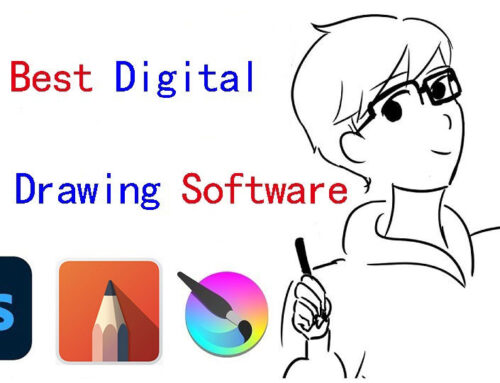



This is super helpful thank you. I’ve downloaded GIMP & Inkscape & look forward to trying them both I’ll likely add SVG-edit as well thanks for showing us these softwares.
Appreciate all the hard work on doing the research!
But did you forget Canva?
Canva is simple and easy to use, great for beginners to start graphic design.
Thank you so much!! This will really help me since I’m in the graphic designers’ club.
I`ve watched a few articles on this topic and this is by far the best one with more details and specific comments about each software.
I can see that you`ve used these programs and you have industry experience. Thanks a lot!
The best graphic design software depends on what you’re doing/want to do. For me, 70% InDesign, 20% Illustrator, 5% Photoshop, 4% After Effects, 1% PPT, Premiere, Canva, Figma, Blender and everything else.
I want to make logos and flyers for businesses. would Illustrator be best for that? Thanks.
Yes. Illustrator is great for vector art (making icons, logos etc).
Great info! 40% Illustrator, 30 Photoshop, 10 Indesign 10 XD and 10 the rest. I’m mostly working in Branding, advertising and social.
If someone dont want to spend the money on Photoshop and Illustrator, you can always look into Affinity Photo and Affinity Designer as alternatives.
The Adobe Products are the standard, while the Affinity Products work great as alternatives.